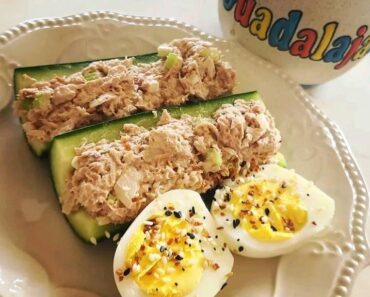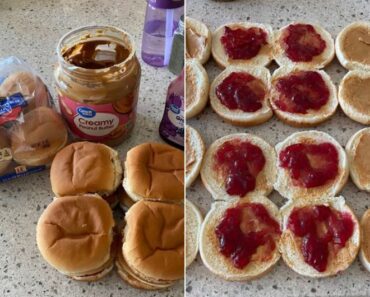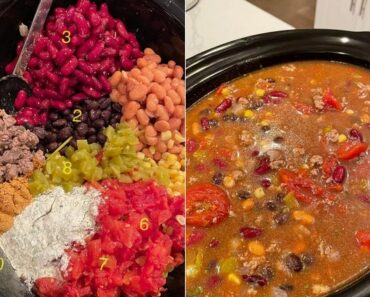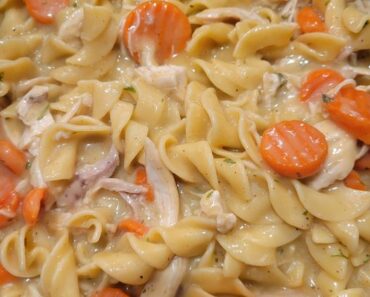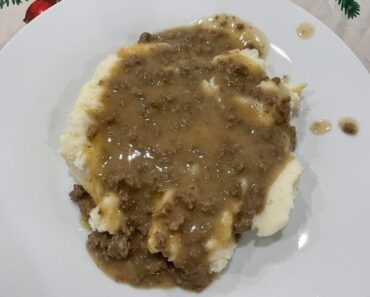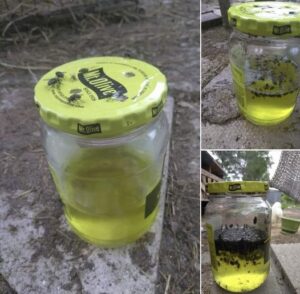
Sweet Pickle Fly Trap: A Natural and Effective Solution
There’s a certain calmness that comes from knowing you’ve found an effective, eco-friendly solution to pesky flies. This Sweet Pickle Fly Trap recipe offers just that, with a touch of sweetness and simplicity. Whether you’re hosting a summer BBQ or just want to keep your kitchen fly-free, this ingenious trick uses everyday ingredients and transforms them into a powerful pest control method.
Ingredients Overview:
- Sweet Pickles: The star of this recipe! Their sweet, tangy brine is irresistible to flies.
- Tools: A Philips head screwdriver and a hammer are essential for creating the entry points for the flies.
Step-by-Step Cooking Instructions:
Step 1: Purchase Your Pickles Buy a jar of sweet pickles from your local grocery store. These pickles are typically sweeter and tangier than their dill counterparts, making them perfect for attracting flies.
Step 2: Enjoy the Pickles Relish the sweet pickles as a snack, side, or part of your favorite recipe. Once you’ve savored every last one, ensure you save all the pickle juice.
Step 3: Prepare the Trap Using a Philips head screwdriver and a hammer, carefully tap four holes into the metal lid of the pickle jar. Make sure the holes are big enough for flies to enter but small enough to prevent them from escaping.
Step 4: Set the Trap Place the jar in an area where flies are most troublesome. Leave it for two days and observe as the flies are drawn to the sweet, tangy brine.
Storage and Reheating Tips
- Storage: If you don’t use all the brine at once, you can keep the jar sealed and store it in the fridge for future use.
- Reheating: There’s no need to reheat, but if the brine starts to lose its potency, simply replace it with a fresh batch of sweet pickle juice.
Helpful Tips for Enhancing the Recipe
Tip 1: Ensure Freshness: Use fresh sweet pickle brine for the best results. Old or stale brine may not be as effective.
Tip 2: Proper Placement: Position the trap near windows, doors, or trash bins where flies are most likely to congregate.
Tip 3: Regular Maintenance: Check the trap regularly. If it becomes too full of flies, replace the brine to maintain effectiveness.
Tip 4: Alternative Ingredients: If you don’t have sweet pickle brine, a mixture of apple cider vinegar, water, and sugar can be an effective substitute.
Tip 5: Secure the Lid: Ensure the lid is tightly screwed on after making the holes to prevent any spills.
Tip 6: Indoor and Outdoor Use: This trap works both indoors and outdoors, making it versatile for different settings.
Tip 7: Dispose Responsibly: When the trap is full, dispose of the contents responsibly to avoid any unpleasant odors or mess.
Tip 8: Avoid Overfilling: Don’t fill the jar to the brim with brine; leave some space to avoid spillage.
Tip 9: Experiment with Sizes: If the trap isn’t catching enough flies, try adjusting the size of the holes slightly.
Tip 10: Label Your Jar: Clearly label your jar as a fly trap to avoid any accidental consumption.
Popular Questions and Answers
Can I use dill pickles instead? No, dill pickles won’t work as effectively. The sweetness of the brine is crucial for attracting flies.
How long does it take to see results? Typically, you should see results within two days.
What if it’s not working? Ensure the holes are the right size and the brine is fresh. Placement is also key – try moving the trap to a different location.
Can I reuse the same brine? Yes, but if it becomes too full or loses its effectiveness, replace it with fresh brine.
Is it safe to use indoors? Absolutely. Just ensure it’s placed where children or pets cannot knock it over.
How do I clean the jar? Dispose of the brine and trapped flies, then wash the jar thoroughly with soap and water.
Does it attract other pests? Generally, it’s designed to attract flies, but it could attract other insects like gnats or fruit flies.
Can I use a different jar? Yes, as long as it has a lid you can perforate and enough brine to attract flies.
What if I don’t have a screwdriver and hammer? Any tool that can create small, clean holes in the lid will work.
How often should I replace the brine? Every 1-2 weeks or when it becomes too full of flies.
Secrets for Achieving Culinary Perfection
Secret 1: Fresh Ingredients: Always use fresh sweet pickles and brine for the best results.
Secret 2: Optimal Placement: Place traps where flies are most active to maximize effectiveness.
Secret 3: Consistent Monitoring: Regularly check and maintain the trap to ensure continuous efficiency.
Secret 4: Experimentation: Don’t be afraid to try different locations or adjust the size of the holes for better results.
Secret 5: Clean Surroundings: Keep the area around the trap clean to avoid attracting flies to other spots.
Secret 6: Seasonal Adjustments: Adjust the placement of the trap based on seasonal fly activity.
Secret 7: Multiple Traps: Use multiple traps in larger areas for comprehensive coverage.
Secret 8: Brine Enhancements: Adding a bit of sugar to the brine can make it even more attractive to flies.
Secret 9: Avoid Contamination: Ensure no food particles are left in the brine to avoid unwanted odors.
Secret 10: Education: Inform your family or housemates about the trap to prevent accidental tampering.
Embrace the simplicity and effectiveness of this Sweet Pickle Fly Trap. With just a few steps, you’ll enjoy a fly-free environment, allowing you to relax and savor the sweeter moments of life


